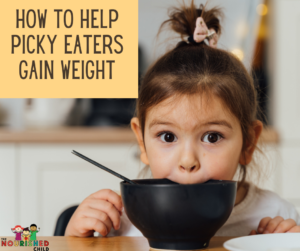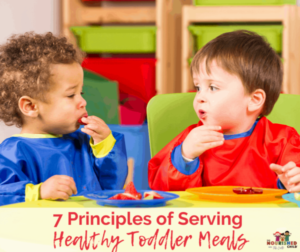Healthy Finger Foods for Toddlers
August 13, 2021
After baby food, the next step in eating is moving onto toddler finger foods. That’s when your baby’s food world opens up and is full of adventure and new experiences.
Remember the “honeymoon stage of feeding” when your baby started solids? He was open to new flavors, textures and experiences. It was a time when you and your baby were in sync and your baby ate anything.
What happened to that adventurous eater?
Your baby is a toddler now. He’s more curious and wants to explore his world independently, and that includes eating, too. And that’s a good thing! This is all part of the developmental changes we expect to happen in toddlerhood.
Feeding gets harder and may become less enjoyable. You and your child may struggle.
But there is a solution!
Finger food for toddlers can be the gateway to independent eating.
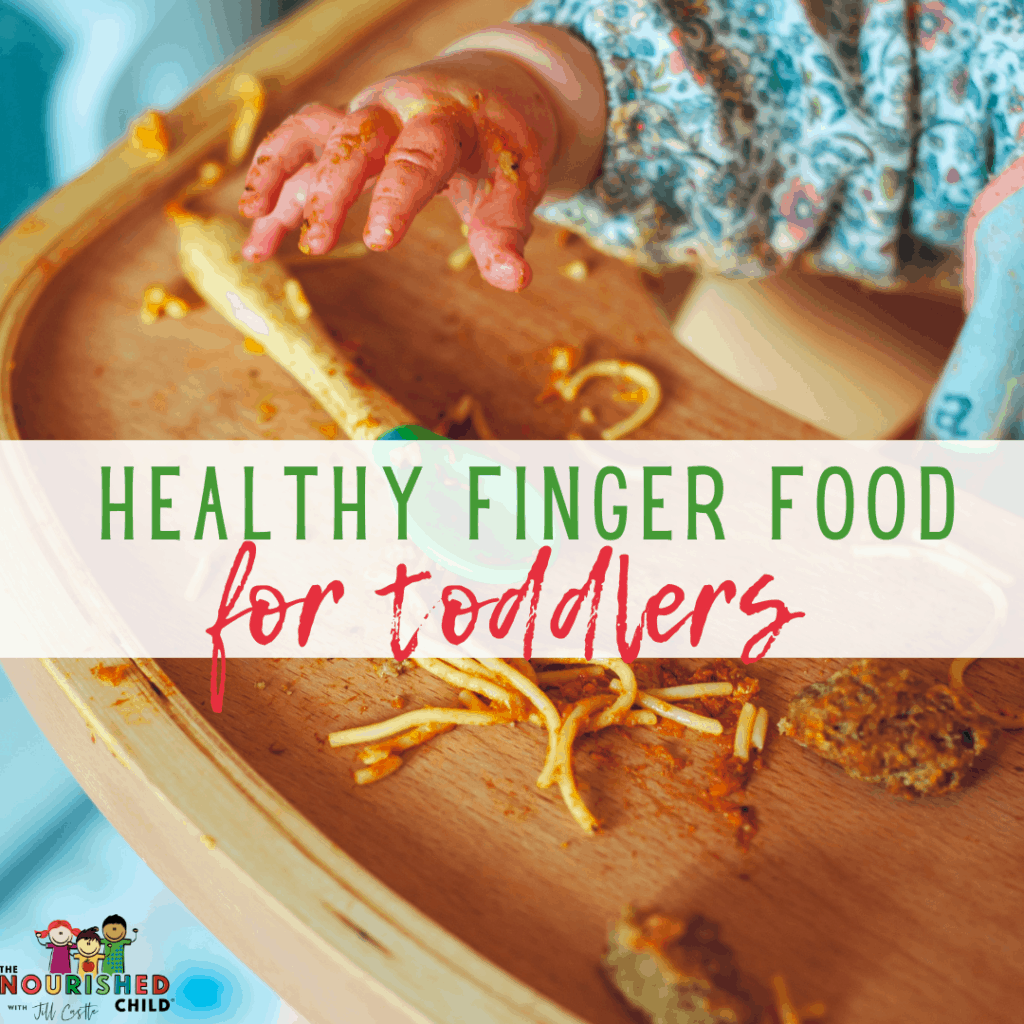
Yes, allowing your toddler to feed himself can get messy! Even though food ends up on the floor, in their chair and on themselves, allowing self-feeding is so very important.
In this article, you’ll learn the benefits of finger foods and my favorite nutrient-rich finger foods for toddlers.
[Related] Toddler Multivitamins: What You Should Know Before You Buy
Benefits of Finger Foods for Toddlers
Finger foods not only give your toddler autonomy but they provide key nutrients, expose your toddler to a wide variety of flavors and textures and establish taste preferences for healthy foods.
Exposure to New Foods
Finger foods are a great opportunity for trying new foods with children.
As a pediatric nutritionist, I’ve written a lot about exposing your toddler to a variety of foods without pressure, so she learns to like them and wants to eat them.
The tricks and strategies parents use to get kids to eat often result in short-lived success.
Repeated exposure to a variety of new foods is a scientifically proven path to learning to like and eat a variety of nutritious foods.
Develop Taste Preferences
You probably already know that what a young child eats early in life contributes significantly to their taste preferences later.
For example, if sweets are offered early, and regularly, a preference for these foods may develop.
Use your child’s growing curiosity to offer him a variety of healthy finger foods, to encourage a preference for foods that aren’t loaded with sugar, salt and fat when he’s older.
Key Nutrients Your Child Needs
Finger food for toddlers should be nutrient-rich.
Toddlers are growing, and there’s a lot going on at this stage. Much of it is happening in the brain and bones.
Toddler finger foods can help you bridge the nutritional needs while capitalizing on what toddlers need to do developmentally.
10 Toddler Finger Foods for Independent Eating
So, which finger foods for toddlers help foster independence, self-feeding skills and provide great nutrition?
Here are 10 of my favorite finger food ideas for babies and toddlers.
1. Fruits and Vegetables (soft and cut up)
Blueberries, raspberries and halved strawberries are great for toddlers practicing their pincer grasp.
Peel, steam or blanch and cut vegetables into small chunks so they are safe for toddlers to eat. Whole fruit such as pears, soft apples should be peeled.
Avocado
These are rich in mono-unsaturated fats (the healthy kind), which are especially important for the brain.
Avocado is also creamy and mild in flavor. You can brighten the flavor with a squeeze of lemon or lime, and prime the palate for guacamole (Yum!).
It’s also a healthy sandwich spread alternative for mayonnaise.
Broccoli
Introduce this cruciferous vegetable early on, and the odds for future eating will increase—even if your toddler takes a break along the way.
Don’t forget to use dips for dipping (a fun hands-on experience for toddlers) and blanch broccoli to make chewing it easier.
Cauliflower
This mild-flavored veggie is one of the most versatile. It pairs nicely with melted cheese, honey mustard, or as a substitute for mashed potato.
Try adding cauliflower to mac and cheese or making this rutabaga mash using cauliflower.
Melon
Ball it, cube it, or let your toddler scoop it with a spoon.
Ripe melon is loaded with nutrients and is a source of hydration in warmer weather.
2. Eggs
Either scrambled or hard-boiled and chopped, eggs are a quick, easy and protein packed finger food.
Check out this egg in a hole recipe.
3. Beans
Chickpeas, kidney beans, and black beans are great sources of fiber and protein as well as iron and zinc, key nutrients for the brain development that’s happening during this stage.
BPA and sodium-free canned beans such as Eden organic are a quick option to choose if you don’t have time to prep and cook dried beans.
Tip: Rinse the salt and gooey stuff off canned beans before offering them to your toddler.
Try this toddler friendly recipe for Baby Bean Bites!
4. Whole Grain Pancakes
Whip up a batch of oatmeal, whole wheat pancakes or waffles and cut them into bite-size pieces. Freeze the leftovers for a quick meal or snack.
Pancake muffins are an easy finger food alternative.
5. Kamut Puffs
This soft cereal made by Nature’s Path is a quick and portable snack on the go for little toddlers. And it’s sugar-free, salt-free, and is a good source of fiber.
Make a trail mix by adding puffs, raisins, and an O-shaped cereal (Earth’s Best brand is a nice option).
6. Homemade Mini Muffins
Make batches of banana, oatmeal, bran or blueberry muffins with a mini muffin tin. Freeze extra portions for a quick finger food snack on another day.
Add ground flax or hemp hearts to boost up omega-3 fat intake (and taste).
Here’s a raspberry muffin recipe your toddler will love.
7. Whole Wheat or Whole Grain Bread
Get your toddler started with the flavor and texture of whole grain early. It helps establish a flavor preference and will be much easier in the long run.
Try whole wheat pumpkin bread and pumpkin chocolate chunk muffins for starters.
8. Salmon
Kids do better with this heart-healthy food over time if kids are exposed to it early and frequently.
Grilled, poached or baked and cut into manageable chunks or finger-like strips are the best ways to introduce fish to your toddler.
Don’t be afraid to try soy sauce, ginger and garlic; Chef Prudhomme’s Redfish Magic; or lemon and dill.
9. Other Fish or Shellfish
Parents tell me all the time that they can’t get their kids to eat any fish. If you want your toddler to eat shrimp, tilapia, codfish and other water-loving creatures, get these on the menu when she’s young.
10. Dips, Yogurts and Sauces
Dips and sauces make a great companion for finger foods, and it exposes your child to different textures and to eating combined foods.
Toss your toddler’s pasta in a little tomato sauce so he gets get used to eating it with sauce.
Yogurt makes a nice dip for fruit and pancakes. Try a variety of dips for veggies to add flavor.
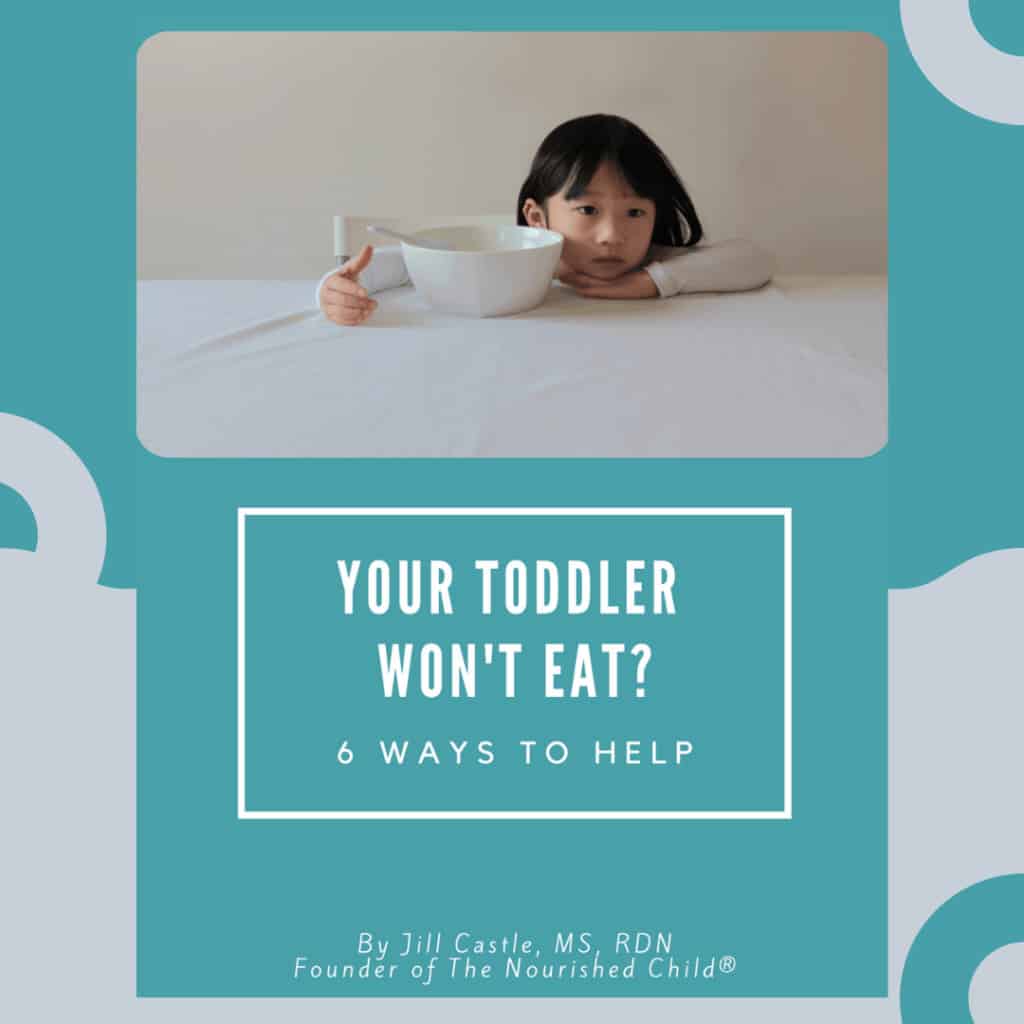
Click Here to Snag Your FREE Cheat Sheet
Have Fun with Finger Foods for Toddlers
There’s a whole world of finger food for toddlers to experience.
Choose fruits, veggies, whole grains, lean protein, and healthy fats so your toddler gets exposed to a variety of foods and abundant nutrients for that all-important “inside job” of growth and development.
The extra clean-up can be frustrating, but the time doesn’t last too long. Remember, your little one is learning a lot about eating and feeding!
What finger foods are you inspired to introduce?
What About Finger Foods for Picky Toddlers?
Using finger foods is one of the best strategies you can use when toddlers are picky or fussy with food. Why?
It puts them in control, which always seems to work out better for everyone.
If you have a picky toddler, try not to short-order cook, but instead, take the foods you’re serving for your family and cut them into “finger” shapes or nuggets. This will make it easier for your toddler to handle them on their own.
Baby Finger Foods (for a 1 Year Old)
Some of my favorite, nutritious finger foods for one year olds are:
- canned beans
- toast fingers spread with nut butter, avocado, butter/jelly, cream cheese, or hummus
- cooked pasta
- sandwiches cut into 1/2″ squares
- buttery crackers
- canned vegetables like green beans, rinsed
- canned fruit in natural juices
- string cheese (stringed)
- soft tofu chunks
- fresh, ripe fruit cut into “fingers,” smashed (blueberry), or chopped
- mini muffins
- pancake or French toast strips
You May also Want to Read or Watch:

This article was updated April 2023.

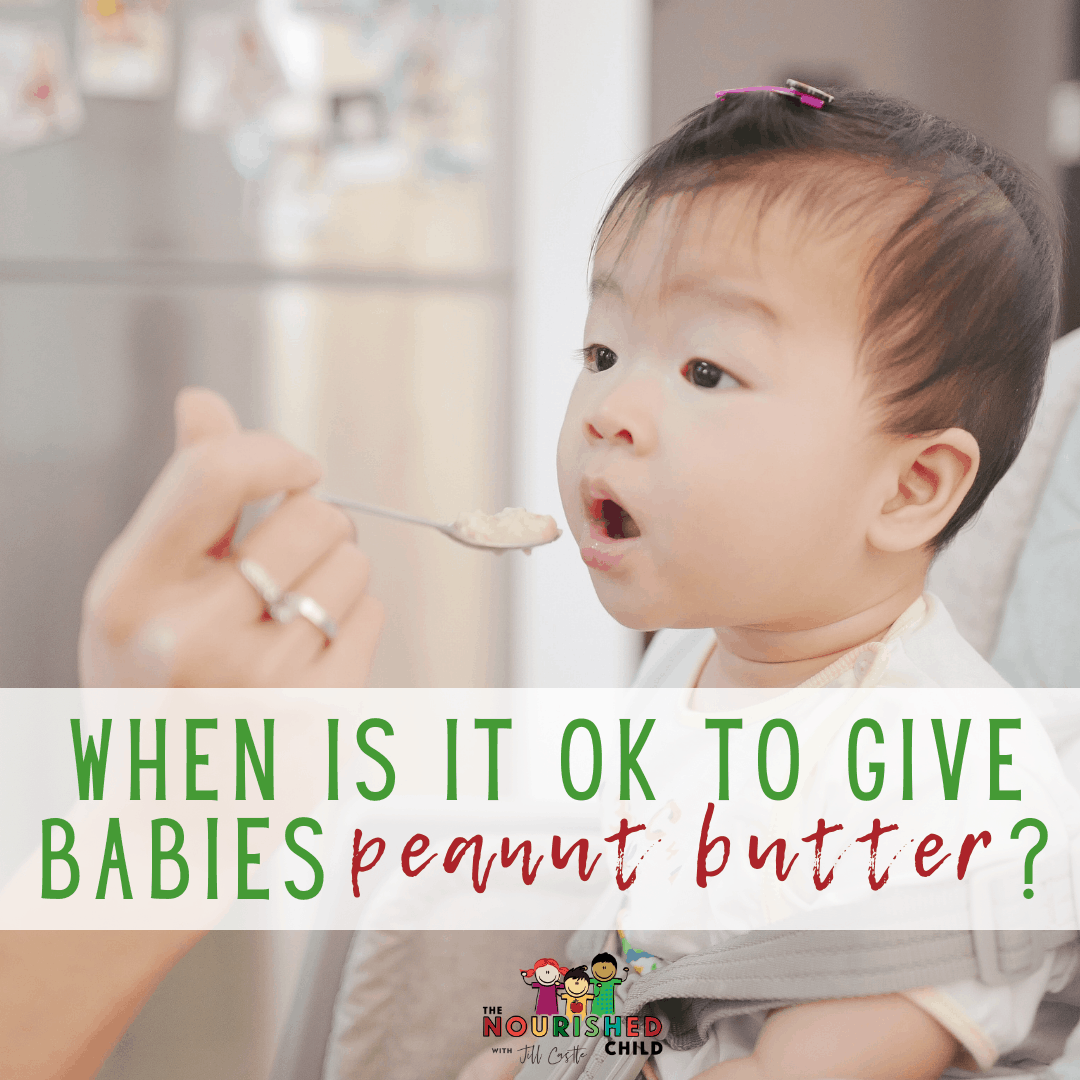
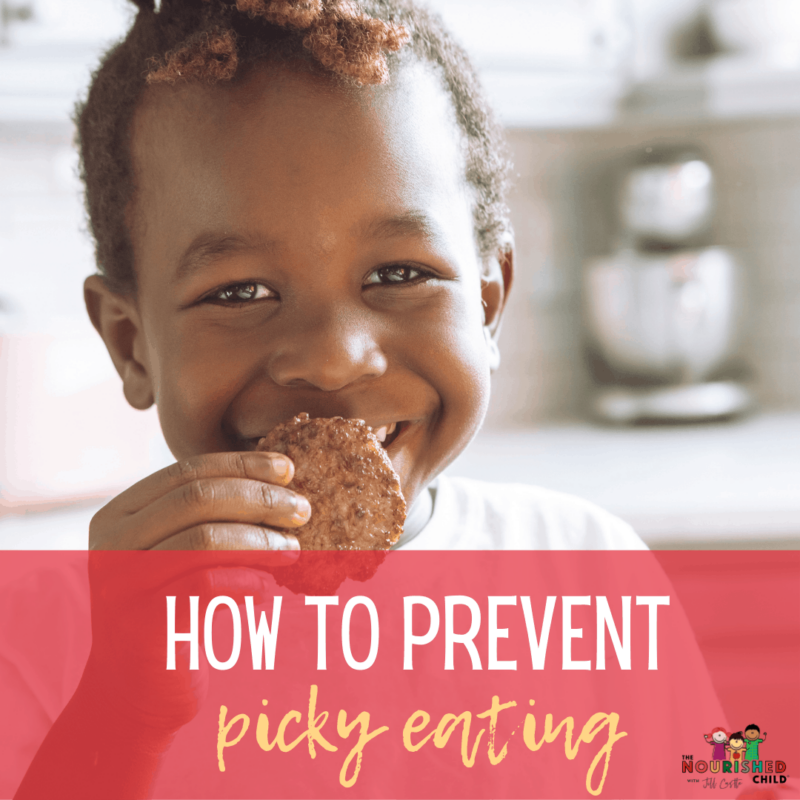
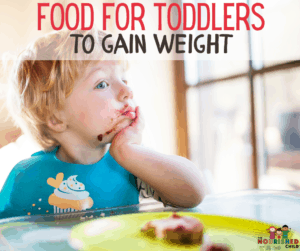


![My Toddler Won’t Eat! [Step-by-Step Guide]](https://thenourishedchild.com/wp-content/uploads/2021/04/Your-Toddler-Wont-Eat-optin-graphic-300x300.jpg)
